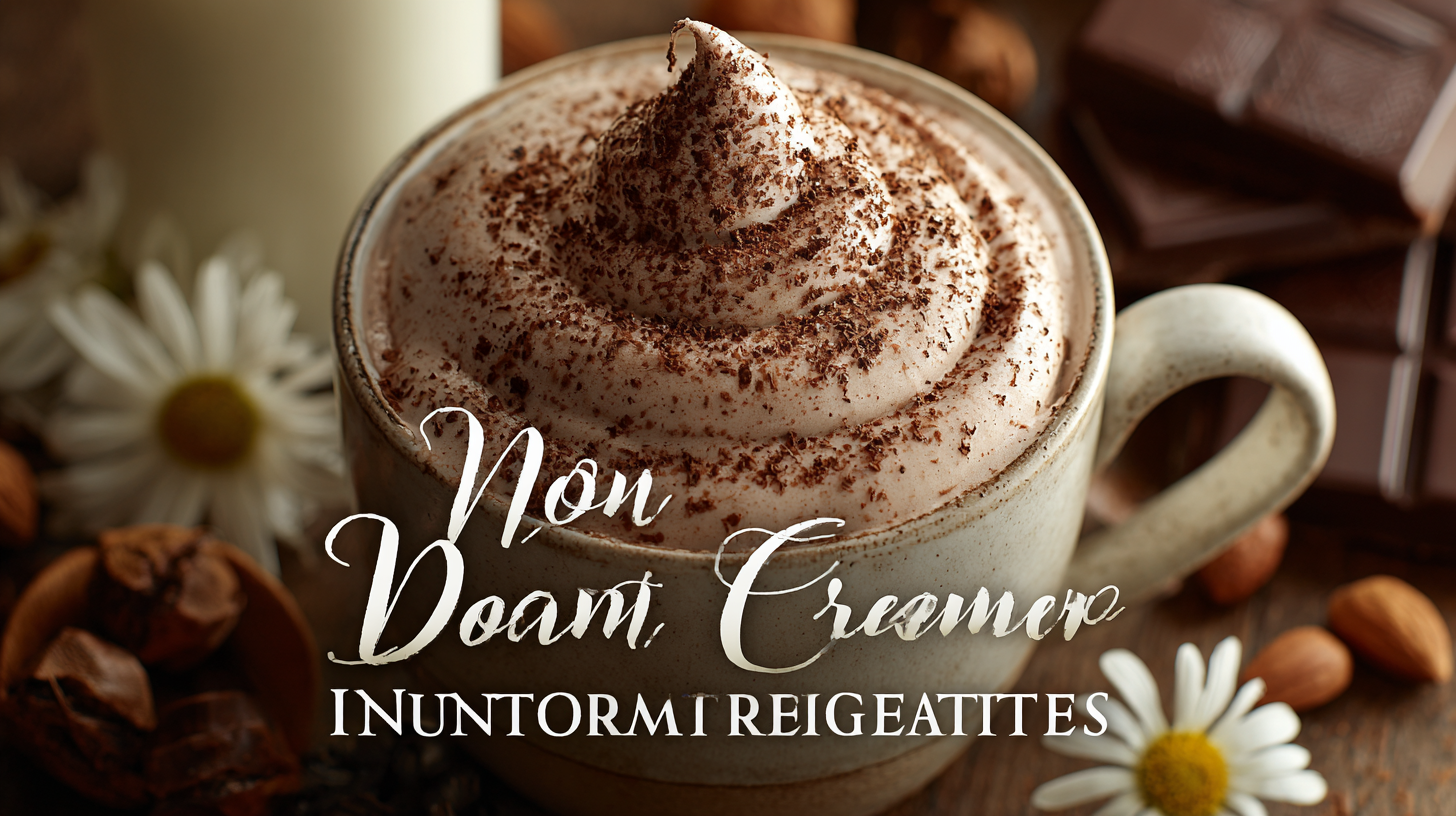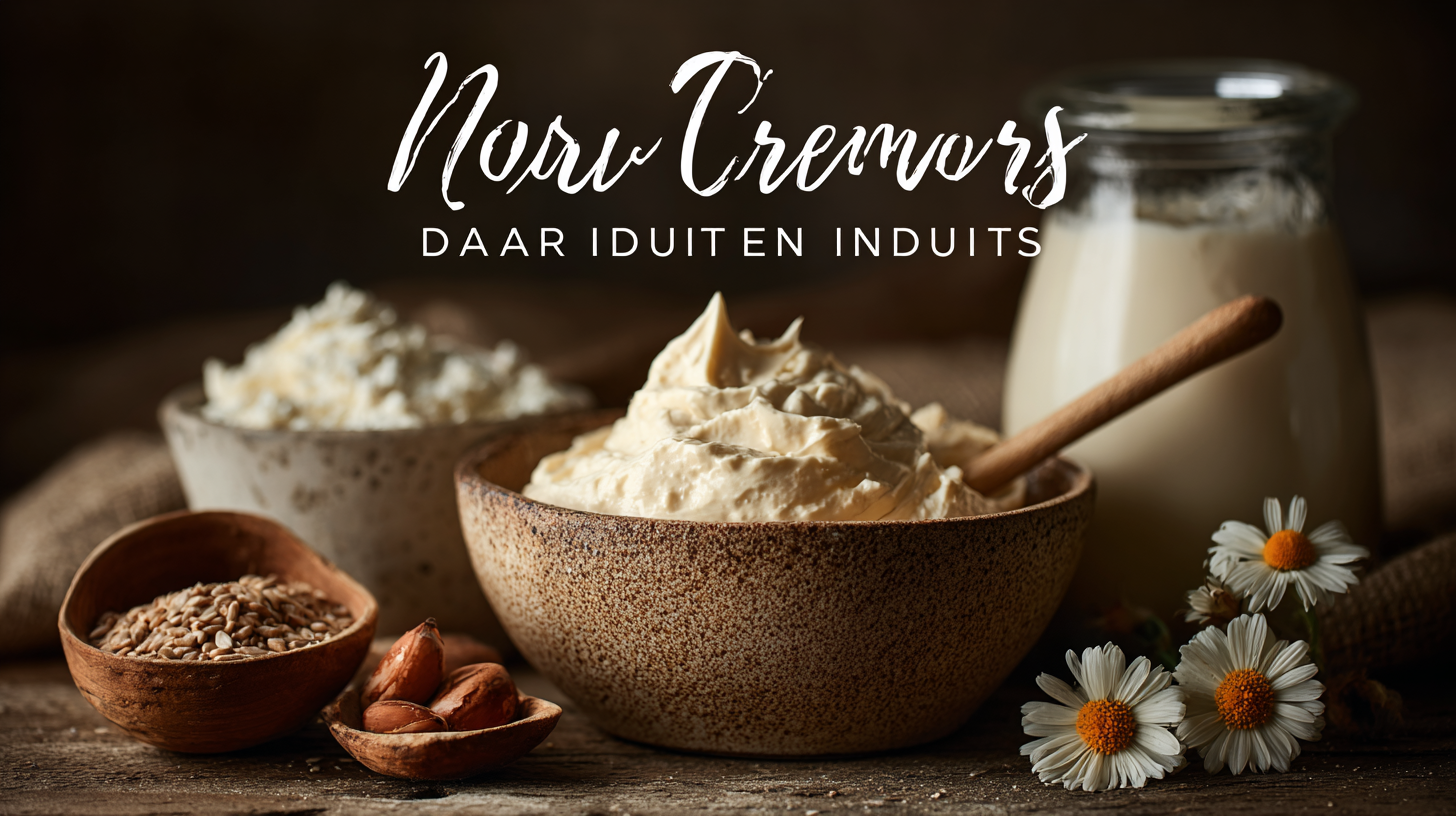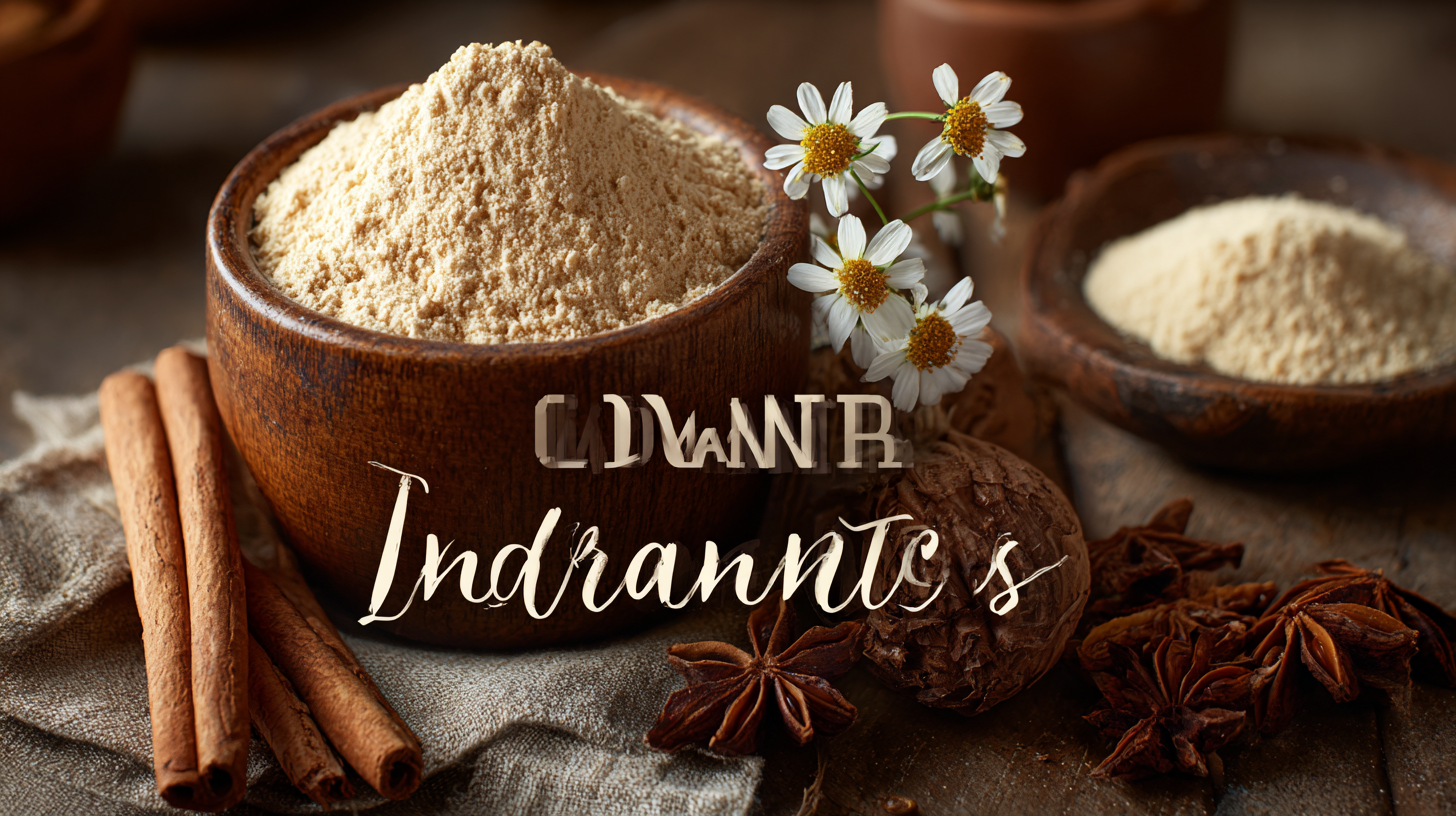
Market Trends for Best Non Dairy Creamer Ingredients in 2025 with Key Insights and Helpful Tips
The non-dairy creamer market has experienced significant growth over the past few years, driven by a rising demand for plant-based alternatives and consumer preference for healthier lifestyle choices. According to a recent market research report by Grand View Research, the global non-dairy creamer market size was valued at approximately $4.1 billion in 2021 and is expected to expand at a compound annual growth rate (CAGR) of over 6% from 2022 to 2028. As we look towards 2025, understanding the key trends and innovative Non Dairy Creamer Ingredients that can elevate both flavor and health benefits is crucial for manufacturers and consumers alike. This ultimate guide will delve into the latest market insights, highlighting emerging ingredients and offering helpful tips for navigating this dynamic landscape, ensuring stakeholders can stay ahead in an increasingly competitive environment.

Market Overview: The Rising Demand for Non-Dairy Creamers in 2025
As we look forward to 2025, the market for non-dairy creamers is experiencing a significant surge in demand. This rise can be attributed to several factors, such as the increasing number of health-conscious consumers and the growing preference for plant-based alternatives. Non-dairy creamers offer versatile options that cater to various dietary needs while delivering rich flavors and textures, making them a popular choice among coffee lovers and bakers alike.
To navigate this growing market effectively, here are some helpful tips for consumers and manufacturers alike. First, always check ingredient labels to identify quality components; premium non-dairy creamers often contain natural ingredients with added nutritional benefits. Second, consider experimenting with different bases such as almond, coconut, or oat, as these can bring unique flavors to your beverages and recipes. Lastly, be aware of the sustainability practices of brands, as consumers are increasingly prioritizing eco-friendly products.
Understanding these trends and tips can help both consumers seeking healthier alternatives and businesses looking to innovate in their product offerings. Staying informed about market dynamics will be crucial for anyone involved in the non-dairy creamer industry as it continues to evolve in the coming years.
Key Ingredients Driving Growth: Understanding Plant-Based Alternatives
As consumers become more health-conscious and environmentally aware, the demand for plant-based alternatives in the food industry is surging. This trend is particularly evident in the non-dairy creamer market, where key ingredients such as almond, oat, and coconut are driving growth. These plant-based options not only cater to those with lactose intolerance but also appeal to a broader audience looking to reduce their dairy consumption. Almond creamers, for example, are praised for their creamy texture and subtle nutty flavor, making them a favorite in coffee shops and homes alike.
In addition to the primary ingredients, natural sweeteners and flavor enhancers such as vanilla extract and coconut sugar are gaining traction. These components not only improve the taste profile but also align with the clean label trend that consumers are seeking. Brands that focus on transparency and sustainability by sourcing high-quality, organic ingredients are likely to attract a loyal customer base. Ultimately, understanding these key ingredients and their impact on consumer choices will be vital for companies looking to thrive in the non-dairy creamer market by 2025.

Health Trends Influencing Non-Dairy Creamer Ingredients in 2025
As we look toward 2025, the landscape of non-dairy creamers is being reshaped by emerging health trends that prioritize both nutrition and sustainability. Consumers are increasingly drawn to plant-based ingredients that not only cater to lactose intolerance but also offer a plethora of health benefits. Innovations in formulations are likely to incorporate superfoods such as oat milk, almond milk, and coconut cream, each providing unique flavors as well as essential nutrients that promote overall wellness.
Moreover, there is a growing demand for non-dairy creamers to be free from artificial additives, gluten, and other allergens. Clean-label products are becoming the gold standard as consumers seek transparency about the ingredients in their food. In 2025, we can expect to see a rise in options fortified with probiotics for gut health, and sources high in omega-3 fatty acids, attracting health-conscious individuals. The shift towards more sustainable practices will also influence ingredient sourcing, with brands increasingly focusing on ethical production and reduced carbon footprints. As these health trends evolve, they will undoubtedly redefine the non-dairy creamer market, making it more vibrant and health-oriented.
Consumer Preferences: Flavor Innovations and Customization in Non-Dairy Creamers
As we look towards 2025, consumer preferences in the non-dairy creamer market are increasingly leaning toward flavor innovations and customization. Today's consumers seek more than just a standard coffee companion; they desire unique and diverse flavor profiles that can elevate their beverage experiences. Brands are responding by introducing an array of options, including seasonal flavors, indulgent dessert inspirations, and even savory profiles that cater to adventurous palates. This trend highlights the importance of not just meeting basic dietary needs, but also enhancing the sensory experience of consumers who prioritize taste.
Furthermore, customization is becoming a key factor in the non-dairy creamer landscape. With the rise of health-conscious consumers, many are looking for options that allow them to tailor their creamer to fit their specific dietary requirements and flavor preferences. Brands that offer customizable blends, such as the ability to mix and match ingredients or adjust sweetness levels, are gaining traction. This not only fosters consumer loyalty but also encourages experimentation and personal connection to the product. As we progress into the future, those non-dairy creamer companies that embrace innovation and prioritize consumer engagement are likely to thrive in this competitive market.
Market Trends for Best Non Dairy Creamer Ingredients in 2025
| Ingredient Type | Consumer Preference (%) | Flavor Innovation Score | Customization Demand (%) |
|---|---|---|---|
| Almond Milk | 28% | 8.5/10 | 35% |
| Coconut Cream | 22% | 8.0/10 | 30% |
| Soy Milk | 18% | 7.5/10 | 40% |
| Oat Milk | 25% | 9.0/10 | 50% |
| Cashew Cream | 7% | 6.0/10 | 20% |
Sustainability and Ethical Sourcing: The Future of Non-Dairy Creamer Ingredients
As the demand for non-dairy creamers continues to rise, a significant focus is shifting toward sustainability and ethical sourcing in the ingredients that make up these products. Key players in the market are embracing eco-friendly practices, not only to meet consumer expectations but also to promote a greener supply chain. For instance, the push for sustainable palm oil underscores the industry's commitment to eliminating deforestation, ensuring that any ingredient sourced contributes positively to the environment.
Additionally, the growing awareness and preference for plant-based alternatives are reshaping product offerings. The dairy-free cream market is projected to expand significantly as consumers increasingly seek lactose-free and plant-based options for their culinary needs. This trend coincides with a broader wellness movement, where consumers are gravitating towards "Better For" products that align with their health and ethical preferences. As we look toward 2025 and beyond, the integration of innovative, responsibly sourced ingredients will be paramount in driving the non-dairy creamers market forward.

